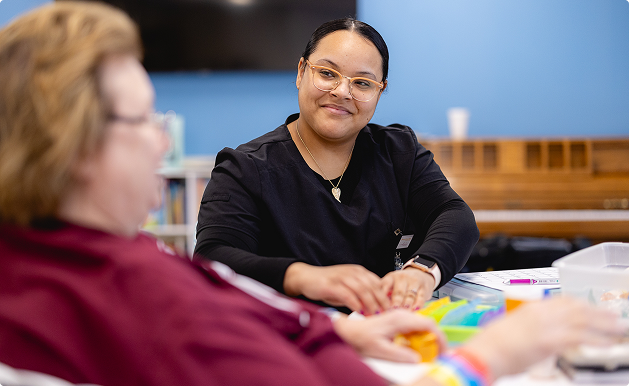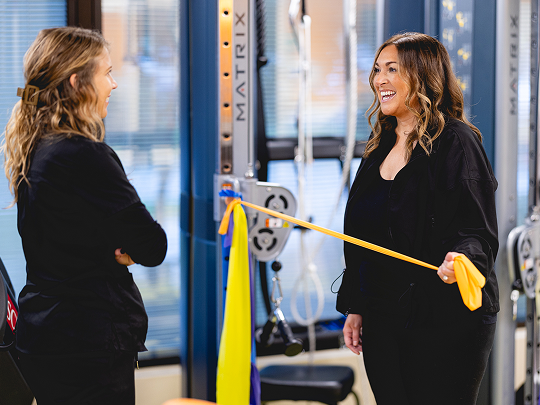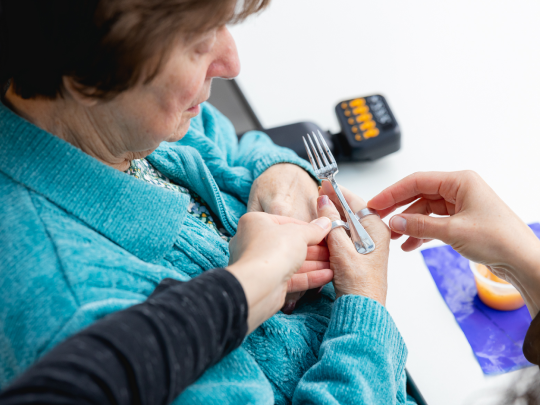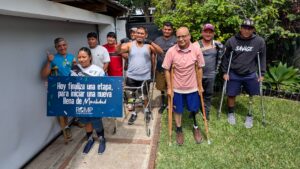Restore the Use of Your Hands
Grasping a pen, buttoning a shirt, and preparing a meal are everyday tasks we often take for granted until an injury or illness prevents normal use of our hands.
The hand therapy team at Mary Free Bed helps patients of all ages who are experiencing functional limitations anywhere from the shoulder to the fingers, due to injury, overuse, or various diagnoses.
Understanding Hand Therapy
Hand therapy is essential for individuals who have sustained injuries or conditions affecting the bones, ligaments, tendons, muscles, nerves, arteries, veins, or skin of their arms. Our goal is to restore you to normal activities of daily living by addressing these issues through targeted therapy.
A hand therapy program can incorporate a variety of treatment methods to address issues such as:
- Pain
- Impaired Function
- Decreased Range of Motion
- Weakness
- Scarring
- Edema
- Wounds
- Hypersensitivity
- Decreased Sensation/Neuropathy
- Muscle Spasms

Who is at Risk?
Patients who might benefit from our hand therapy services often have diagnoses such as:
Cubital Tunnel
Tendon Injuries
Nerve Injuries
Elbow, Forearm, Wrist, and Hand Fractures
Treatment, Risk Factors, & Protection

Our team of certified occupational therapists and experienced occupational therapy assistants will work closely with you, each other, and your physician to develop a goal-oriented treatment plan.
Your hand therapy team may recommend and implement a variety of treatment options, including:
- Custom orthosis fabrication
- Joint protection techniques
- Adaptive equipment usev
- Ultrasound treatments
- Wound care
- Fluidotherapy

Hand therapy may be needed for patients experiencing limitations due to:
Residents spend time in our area outpatient clinics, including some with our community care partners:
- Injuries to bones, ligaments, tendons, muscles, or nerves
- Conditions like carpal tunnel syndrome, cubital tunnel and De Quervain’s tenosynovitis
- Fractures and amputations affecting the upper extremities
Risk Factors You May Be Able to Change
- Overuse injuries due to repetitive motions
- Improper ergonomics during daily activities
- Lack of protective measures for joints and muscles

What’s Happening at Mary Free Bed?
Ready to get started with Mary Free Bed?
Wherever you are in your journey, we’re ready when you are. Our team is here to listen, support and help guide your recovery. Whether you’re just starting out or picking up where you left off, we’re ready to support your goals—big and small.







